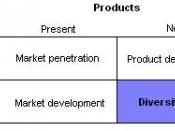This write-up attempts to review what authors have written specifically on strategic marketing process; particularly their approach and personal philosophy vis-Ã -vis this concept. Within the various approaches, it looks at the respective purpose and structure. Then onwards provide an analytical perspective on the SWOT analysis which seemingly, marketing gurus and authors embrace in their strategic plan in today's market environment.
Review: Strategic Marketing Plan
Doyle (2002) explains strategic marketing plan is concerned with adapting the organisation to a changing environment more effectively than their competitors. "Organisation succeeds when they meet the needs of customers more effectively than their competitors" (Doyle 2002, p. 92). The market's drivers for change (Drummond, Ensor 2003), some of which are far beyond the organisation's sphere of control. Adaptability becomes an inextricable phenomenon in mainstream marketing environment. The organisation has to monitor key macroenvironmental variables (demographic, economic, technological, political, and socio-cultural) and microenvironment variables (customers, competitors, distributors, suppliers) that affect its ability to retain customers (Kotler, P.
2003). In order for it to achieve and enjoy a comparative advantage, the organisation executes a careful strategic planning, and using marketing strategies to achieve this aim (Dibb et al 2001). Hence, the notion of strategic marketing plan.
Doyle advanced that a well defined strategy would incorporate the following: Scope of business; Objectives; Strategic business unit (SBU) identification; Resource allocation; Deeping sustainable advantage; Effective functional strategies (positioning, product line, price, promotion and distribution; synergy. The elements of synergy and SBU identification underlined by Doyle prove relevant to large organisations with diverse business units, products and target segments. It would serve a right purpose for management to be clear and exact about their choice of product, what business are they in, and what business do they want to be. He supports his approach with the following diagram.
According to Doyle,


